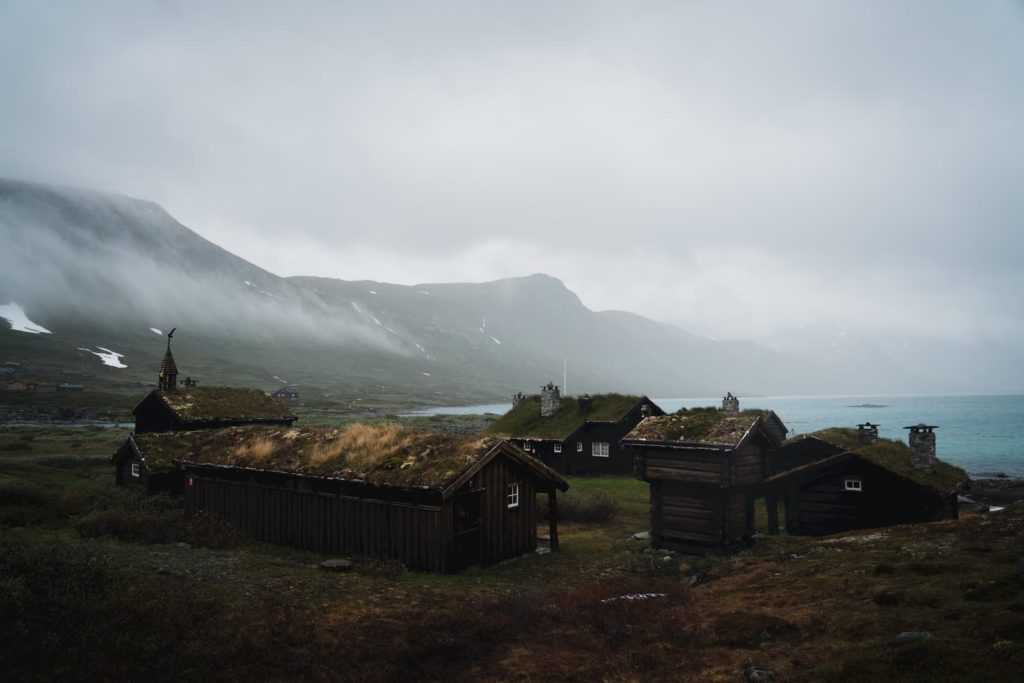
© 2020 Nomadict. All rights reserved.
From a very young age, photography shaped the way I saw the world. My camera was both an excuse and an instrument for me to stop for a moment in time and fully engage with my surroundings, something that continues to hold true even today when I travel. I learned to see the world from a deeper perspective from behind my lens. Landscape photography taught me patience and appreciation for the only heritage we have—our planet Earth.
My search for indigenous communities started initially as a means of self exploration. I was at a lecture by Canadian ethnographer Wade Davis—whose work has since been a big influence on my life—where he talked about remote cultures living in a way that was alien to us in the modern world. But every story he shared about them sounded more and more familiar to my own way of thinking, and I realized I wanted to spend some time with these people and experience it first hand.
Learning about co-existing with bears and wolves; observing first hand how death truly is a part of life; viewing in action agricultural practices without the use of machinery or pesticides among a tribe living remotely in the mountains, it was all so mind-expanding, that there was no going back. The knowledge and life philosophies discussed by each tribe only grew more and more fascinating. Once I started to spend time with them—observing them and learning from them—the obvious next step was to take portraits of their lives and their surroundings.
When I started off, I didn’t really know how to connect with them yet; I didn’t know if it was the right thing to give them money if they asked for it, or what I could talk to them about and what I couldn’t. There was this invisible boundary within my heart from a sense of unfamiliarity with people I knew nothing about, many of whom lived in poverty, or so I perceived. Reminding myself that I was simply here to learn from them (and not to take something away nor give them something I thought they needed) became my doorway into their intimate lives.
Often, I’d hand my camera over to a curious child and let him or her take some photographs, not as an act of charity but simply because I was curious to know what they thought was interesting about their own people. Sometimes, especially if I needed help carrying something, I’d ask one of the village kids to be my “assistant” and let them set up the tripod for me. I always showed them the photographs on my camera screen after the fact.
Additionally, being a woman traveling alone naturally gave me a place within the communities of women wherever I went. They took me in and protected me. Also, spending so much time with indigenous women was a complete blessing. To be on their land and live their life is like traveling back in time. To be able to learn the old ways of women and observe how they show up for each other and even a stranger like myself was revitalizing. Watching the women of the desert walking barefoot with pots of water balanced on their heads in the sweltering heat of the Indian desert, to come home and cook for their families while staying veiled; their strength as they collected wood, and basically ran the family showed me the power of these women who did it all without losing their softness, their femininity.
Sometimes, if I knew I was visiting a village with a strictly meat-based diet (I’m vegetarian), I’d take my own lentils and cook khichari (lentil soup) for the tribe, introducing them to my own native food. It was always an exchange of some sort, and almost never involved money. But did involve a lot of stories, photos, foods, jokes, etc. It was all about dissolving the boundaries between myself and a group of people that seemed so unfamiliar but were truly not.
Outsiders, in the lives of remote cultures, have mostly been missionaries who have taken from them all that was familiar to them to force them to convert into their ways, which has done good no doubt, especially in ending traditions that weren’t serving the people (like the violent practice of headhunting), but has also caused just as much harm. And so there’s a natural apprehensiveness about outsiders among the remote cultures. They have a strong insider-outsider dynamic and rightly so. It helps them keep away those who might cause harm, and protect their age-old oral traditions which are so precious to them.
Every now and then tourists barge into the lives of these people and sneak photographs without any interaction with them nor exhibiting curiosity about their culture. This trend in contemporary times which entails taking photos only with the intention of sharing them often distracts people from truly engaging with their surroundings. Furthermore, it dehumanizes indigenous people turning them into objects of fascination. No mention is made of their stories, their lives, their culture.
In that light, I have been refused a photograph or two particularly during my initial months of travel when I didn’t know yet how to interact with them. But that changed over time. As I started to spend more time with the tribes I visited subsequently, I was almost never refused a photograph or stories.
As I mentioned before, I’ve been taken in, protected, my needs met. In return, I have been “forced” to wear their tribal attire and join the entire tribe in their prayer dance for the Earth. I have been asked to pose for photographs with the entire village. Attend weddings and funerals, visit their deceased, or watch Fast and the Furious 3 in their local language on their small TV with the entire family (of 8 girls). I have been taken in by indigenous women and forced to stay at their homes until I was “fit“ (fat enough) to travel again.
Every photograph I’ve ever taken of tribe members has been with utmost reverence that comes from deep within me. I have an indelible respect for these people who live off the land they’re born in and exhibit so much respect for the living landscape. The wrinkles on their faces carry innumerable stories, the art on their bodies carry symbolisms and historical significance, their interaction with their surroundings is sacred and humbling.
The Eastern world is a spiritually charged ethnosphere, where a persistent awareness of unity and mutual interrelation of all things and events is ingrained in daily rituals.
For example, my short film “The Language They Spoke” is an ode to silence. A good deal of contemporary society has an unhealthy relationship with silence. People fear silence and often rush to fill the space with meaningless substances so that they are no longer uncomfortable. In the East, silence is an essential part of existence. Eastern traditions highly revere silence as the Language of Gods, the living force leading to the peaceful unmoving state of self. In a world which is constantly feeding us information, silence becomes crucial. This poetic silent film invites the viewer to not only reconnoiter their unease if any, but also question it and ultimately find repose in this instrument of discomfort.
They have so much knowledge and wisdom that comes from centuries-old traditions passed down orally. My exposure to their ways of thinking shifted my senses and changed the way I looked at the world. It even changed the way I took photographs of the landscapes around me. Among the indigenous, every sound is a voice, every mountain is being, every encounter a meaning. What simply used to be majestic mountains or oceans or beautiful river valleys turned into teachers of life and precious heritage rich with ancient wisdom and stories from the human past.
Every photograph I have ever taken was with the intention of provoking a discussion. Every face I’ve ever captured carries stories worth lifetimes of a whole tribe. Wade Davis, during a lecture said that, “Indigenous cultures are not failed attempts at modernity, let alone failed attempts to be us. The world in which you were born is just one model of reality.” This information has since lodged itself deep within me. Many of us in the modern world continue to look at remote cultures through eyes of pity, escorting the belief that we need to help them change their ways and become more like us.
A lot of the life philosophies that are being taught in new age spiritual books, these tribes actually live them. I hope to remind people of their roots through my exhibitions and lectures—something that modern life pushes us toward forgetting. I also want to stimulate youth to get behind the lens and document the world through their eyes not only to bring something back, but also to help them slow down and take a good look at the world they’re growing up in.
That is one of the major reasons why I sell my prints. To have photographs of remote cultures hanging on the walls of people around the world helps invoke curiosity about a culture completely different from one’s own and start a conversation that could potentially help expand one’s mind beyond what we already know, and help find solutions to the environmentally unfeasible lifestyles we have adopted. As long as their stories are not shared, they remain objects of fascination. Sharing stories about them not only humanizes them but also reminds us that there are other ways of being, apart from the one model of reality we are used to.
Through observing them, I learned to become more connected with the living world around me. It’s important to remember that they practice traditions that have been passed down orally through generations, ones that work in harmony with the world around them. Their relation to their living landscape is balanced and reciprocal, never taking more from the living land than they return to it, and they are continually engaged with it.
There’s one story in particular that beautifully shows this and impacted me greatly. I was in a small town in northern British Columbia, right by Alaska with a group teaching an Indigenous Filmmakers’ Masterclass, where I met a medicine woman. While telling me about the plants endemic to the region, she pointed out to a mountain far away from us saying she was going, by foot, to that forest the next evening to pick some herbs, if I wanted to go with her. I asked if we could go in the morning instead because I had a flight back later that day, and she looked at me appalled. In the morning the bears and the wolves went berry picking, she said to me.
I have shared this story countless times because it was a pivotal moment in my life. In spite of having grown up vegetarian for the love of animals, and having grown up around cows and goats, feeding cats and crows, I had never thought of “sharing the forest” with other animals or knowing about their routines. I grew up in a city, and in cities we are often so disconnected from other living beings except for our pets and house-plants that we bring home to energize our homes. For us. I realized that all other living beings which surround us, within as well as out of sight, have a routine of their own, and that we’re all sharing this planet earth. We might want to stop for a second and think about them as well.
We’re simply here as visitors. Let us remember to respect that and maintain humility and gratitude while traversing the world. Photography and film have allowed me to experience so many distinct lives, cultures and arts in one lifetime. Through my camera, I have learned about various different worlds. And through the connections, I have learned we are, still, all one.
Would you like content like this sent to your inbox?
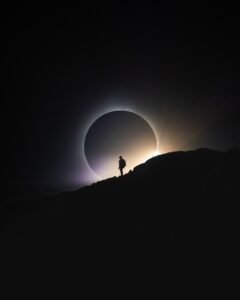
In this article, we delve into the journey of Medhi, exploring his evolution from a young creative mind in Morocco to a seasoned photographer and VFX artist making strides in Canada’s diverse landscapes. From early inspirations drawn from visual arts and travels to the professional challenges and creative triumphs encountered along the way, Medhi shares insights garnered through years of dedication to his craft.
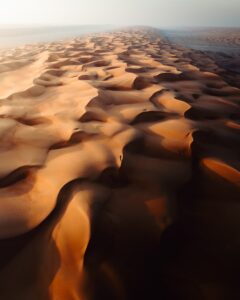
In this article featuring Witold Ziomek, we explore five essential principles for crafting powerful sunset dune photography through editing. Through a practical example, Witold shares his process of editing his award-winning photograph, alongside valuable insights he has gained as a dedicated traveler and photographer.

This article chronicles Mitchell Leong’s journey, who found solace and purpose through his lens. From the rugged expanses of the Canadian Rockies to the ethereal allure of starlit nights, each photograph tells a story of resilience, exploration, and the profound impact of the natural world. Through his lens, he seeks to bridge the gap between science and art, using photography as a tool for conservation and storytelling. Along the way, he shares invaluable lessons learned, from embracing fear to trusting in the power of storytelling.
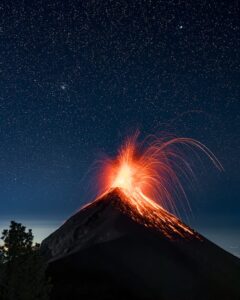
This article follows Phil’s path as a photographer, sparked by his unwavering love for exploration and ignited during post-university travels. Through his lens, we traverse Phil’s transformative journey across captivating landscapes, from the rugged beauty of the Canadian Rockies to the fiery spectacle of Volcán de Fuego in Central America, where he captured the winning shot.
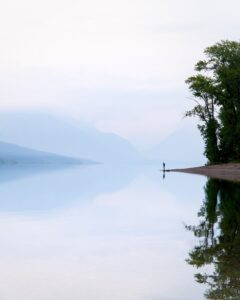
In this article, we delve into the journey of photographer Amirali, whose passion for photography was ignited amidst the challenges of academic life and the chaos of the pandemic. Through his lens, we witness Amirali’s transformative exploration of landscapes, from the serene landscapes of Finland to the mystic scenes of Montana’s nature, where he took a shot that won the Best of the Week.
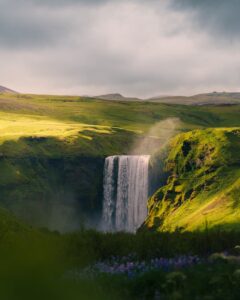
Inspired by a newfound love, Michael transforms the blank pages of his life into a vibrant canvas of nature and exploration. In this article, you can read about the profound lessons learned—from prioritizing living over routine to the art of editing and the magic of impromptu adventures—and witness the evolution of a photographer’s passion amid the breathtaking landscapes of Denmark and Europe.
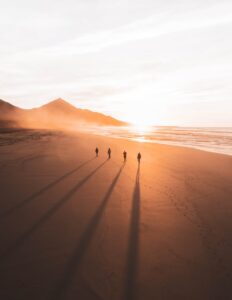
In 2017, Mathieu Morel’s first trip to Iceland marked a turning point in his photography journey. His photograph taken at Cofete Beach in Fuerteventura reflects the lessons he’s learned along the way. Thanks to the support of our community’s votes, he emerged as the winner of our weekly contest.
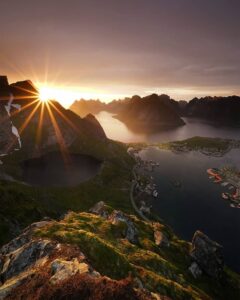
Barbara Thoeny won our weekly contest thanks to a golden hour photo in the beautiful Lofoten Islands. This article teaches us about her winning shot, passion for capturing the northern lights, and most valuable experiences as a solo traveller and photographer.
© 2020 Nomadict. All rights reserved.
